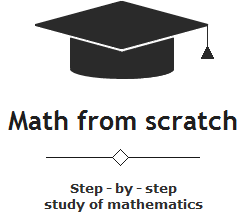Any number in the expression can be replaced with the same number, but written in a different form. For example, take the following expression, which has already been calculated:
15 + 3 = 18
Let’s replace the number 15 with the same number, but written in a different form:
(10 + 5) + 3 = 18
You can see that we replaced the number 15 with the expression in brackets (10 + 5). But the main expression 15 + 3 = 18 was not affected by this. Not affected, since 15 and (10 + 5) are the same thing. After all, 10 + 5 = 15.
Let’s replace the number 18 with the same number, but written in a different form:
(10 + 5) + 3 = 3 √ó 6
Now replace the last number with the same number, but again written in a different form:
(10 + 5) + 3 = 3¬Ý√ó¬Ý2¬Ý√ó¬Ý3
Now let’s compare two expressions: the first one that we had and the new one that we modified:
15 + 3 = 18
(10 + 5) + 3 = 3 √ó 2 √ó 3
At first glance, it seems that these are two different expressions. And so will anyone who sees these two expressions for the first time. But we know that this is the same expression. The only difference is that we changed some of its parameters.
You can change the appearance of this expression indefinitely. The main thing is that equality is not violated. The sign of equality (=) have to justify their position. Remember the second lesson? An equal sign is placed between numbers or expressions only when they are equal.
Such operations, where one number or expression is replaced by itself, but written in a different form, are called conversion or representation.
Representation as a sum
Any number or expression can be represented as a sum. For example, the number 10 can be represented as the sum of 5¬Ý+¬Ý5 or 7¬Ý+¬Ý3 or 8¬Ý+¬Ý2. As long as there is equality between the number and the sum represented. This may look like this:
10 = 5 + 5
10 = 7 + 3
10 = 8 + 2
10 = 6 + 4
In books, you can find the following tasks: present as a sum, and then the numbers or expressions that need to be presented as a sum. This is exactly the case when you need to turn on your creativity and decide which numbers (or expressions) to use to complete the task.
Representation as a difference
From previous lessons, we know that the difference is the result obtained by subtracting one number from another. Difference is also an expression that is connected by a subtraction sign (‚àí). For example the following expressions are differences:
15 – 5
10 – 6
20 – 10
Any number can be represented as a difference. For example, the number 50 can be represented as 90 ‚àí¬Ý40 or 80 ‚àí¬Ý30 or 60 ‚àí¬Ý10. As long as there is equality between the number 50 and the difference represented. It might look like this:
50 = 90 ‚àí 40
50 = 80 ‚àí 30
50 = 60 ‚àí 10
Representation as a work
It is known from previous lessons that a product is a result that is obtained by multiplying one number by another. But a product is also an expression that is connected by a multiplication sign (√ó). For example the following expressions are multiplying:
3 √ó 2
15 √ó 2
12 √ó 3
Any number can be represented as a product. For example, the number 30 can be represented as a product of 5√ó6 or 10√ó3 or 15√ó2. Whatever you want, as long as the equality between the number 30 and the presented product is observed. This may look like this:
30 = 5 √ó 6
30 = 10 √ó 3
30 = 15 √ó 2
Representation as a private
From previous lessons, we know that a quotient is a result that is obtained by dividing one number by another. But a private expression is also called an expression that is connected by a division sign (√∑). For example, the following expressions are private:
15 √∑ 5
30 √∑ 6
12 √∑ 4
Any number can be represented as a quotient. For example, the number 5 can be represented as a quotient of 15¬Ý√∑¬Ý3 or 25¬Ý√∑¬Ý5 or 30¬Ý√∑¬Ý6. As long as there is equality between the number 5 and the quotient represented. This may look like this:
5 = 15 √∑ 3
5 = 25¬Ý√∑ 5
5 = 30¬Ý√∑ 6
This concludes this lesson. To secure the material, try the following tasks:
Task 1. Present the following numbers as a sum: 20, 30, 45, 50. You can use any number to represent it. For example, the first number 20 can be represented as 15 + 5.
Task 2. Imagine the following numbers as a difference: 10, 15, 12, 5 can be represented by any numbers. For example, the first number can be represented as 15-5.
Task 3. Imagine the following numbers as a multiplication: 30, 40, 72.
Task 4. Present the following numbers as a quotient: 7, 5, 9, 3

Thanks for another informative site. The place else may just I am getting that kind of
information written in such a perfect means?
I’ve a mission that I am simply now operating on, and
I have been on the look out for such info.